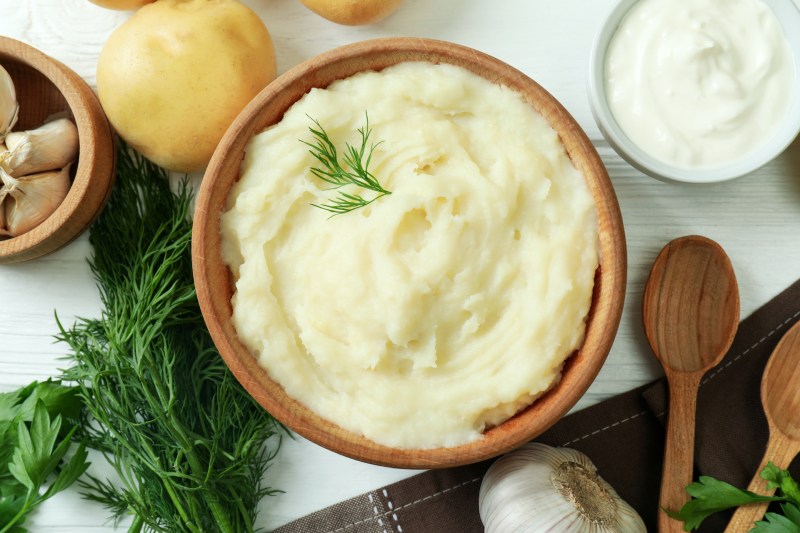
It’s no secret that mashed potatoes are every bit as much the star of the Thanksgiving table as the turkey. Perhaps even more so in some cases. After all, mashed potatoes are the harbinger of gravy, which, let’s be real, is the actual star of the show. As important as they are, though, mashed potatoes can come with some unappetizing setbacks. If your mashed potato recipe is not executed perfectly, this Thanksgiving favorite can be lumpy or gluey, underseasoned and bland, too runny or too stiff. For such a simple dish, it certainly carries its fair share of potential pitfalls.
With this simple mashed potato recipe and method, though, perfect, Michelin-quality mashed potatoes can be easily achieved every single time. The best part? It’s extremely simple to remember, so there’s no need to bring out the crowded recipe box for this one. The ratio for perfect mashed potatoes is 4 parts Yukon Gold potatoes, 1 part heavy cream, and 1 part European butter. We love this simple 4:1:1 ratio because it’s also easily scaled up or down, depending on the size of your gathering. For example, if you have 500 grams of potatoes, you’ll use 125 grams of both cream and butter.

Ultimate mashed potato recipe
Ingredients
- Yukon gold potatoes
- Heavy cream
- European butter, cold and cubed
- Salt and white pepper, to taste
Method
- Preheat the oven to 375 degrees.
- Thoroughly wash potatoes, taking care to remove all of the dirt. Prick each one several times with a fork.
- Bake the potatoes whole until they’re cooked through, 40-50 minutes.
- Over medium heat, bring the cream to a simmer, being careful not to bring it to a full boil.
- Using a towel to protect your hands from the heat, remove the skin from the cooked potatoes with a spoon. Keep as much of the potato flesh intact as possible, being careful to remove only the skins.
- Place the peeled potatoes into a ricer, cutting into smaller pieces to fit your ricer, if needed.
- Once potatoes are riced, season with salt and pepper.
- Add the cream incrementally, gently folding it into the potatoes, gently incorporating it so as not to overmix.
- Once the cream is incorporated, add the cold butter a few pieces at a time, gently folding it into the potato mixture.
- Season to taste as needed, and serve with chopped chive over top (or any other garnish), if desired.

Mashed potato tips and tricks
- Many mashed potato recipes call for boiling potatoes first instead of baking them. By reducing the water content in potatoes, though, their texture will ultimately be far creamier and flavor much more robust.
- Using a kitchen towel or some other barrier between your hands and the oven-baked potatoes is absolutely crucial. These potatoes are extremely hot when they come out of the oven, so be careful!
- Using a ricer is the best way to achieve velvety smooth mashed potatoes. This will both remove all potential lumps, and also reduce the need for excessive mashing, which can cause mashed potatoes to become gluey.
- European butter has a higher fat content than American butter, which works better for mashed potatoes, and, well, everything else.
- Folding in the butter and cream in this way is another way to prevent overmixing. Be as gentle as possible, almost like mixing a souffle.



